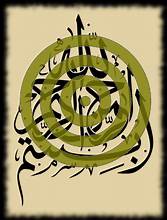Prophetic Patterns: Islamic Templates for Modern Design
In the vast tapestry of design, inspiration can be drawn from a myriad of sources. One such source, deeply rooted in history and culture, is Islamic art and architecture. The Islamic world boasts a rich tradition of intricate patterns, geometric shapes, and calligraphy, creating a visual language that transcends time. In this blog, we delve into the world of Prophetic Patterns – Islamic templates that offer a timeless and sophisticated foundation for modern design.
- Geometry as a Divine Language: Islamic art and design are heavily influenced by the concept of geometry, reflecting a belief in the order and harmony of the universe. Geometric patterns, such as the famous star and interlacing motifs, are a testament to the idea that geometry is a divine language. Modern designers can incorporate these patterns to infuse a sense of balance and unity into their creations.
- Arabesque Elegance: Arabesque, a distinctive form of Islamic art, is characterized by intricate floral and vegetal designs. These flowing patterns, often inspired by the beauty of nature, lend a sense of elegance and grace to any design. From textiles to wallpapers, the incorporation of Arabesque motifs can add a touch of timeless sophistication to modern interiors and products.
- Calligraphy as Art: Islamic calligraphy is an art form in its own right, with its roots in the written word of the Quran. The flowing lines and curves of Arabic script create a visual rhythm that can be incorporated into modern design. Whether it’s in branding, typography, or logo design, the beauty of Islamic calligraphy adds a layer of cultural depth and symbolism.
- Color Palette Inspired by Tradition: The Islamic color palette draws inspiration from the natural world, with earthy tones, deep blues, vibrant greens, and rich reds. Modern designers can embrace this palette to evoke a sense of warmth, authenticity, and connection to the cultural heritage of Islamic art.
- Minimalism with a Twist: While Islamic art is often associated with intricate patterns, it also offers a lesson in balance. Minimalism with an Islamic twist involves clean lines and simple forms, but with a touch of geometric elegance. This style is perfect for those who seek a harmonious blend of modern aesthetics and cultural richness.
- Interplay of Light and Space: Islamic architecture is known for its clever use of light and space. Incorporating elements like geometrically patterned screens, known as Mashrabiya, into modern design allows for the creation of dynamic spaces that play with light and shadow, providing both privacy and a visually engaging experience.
